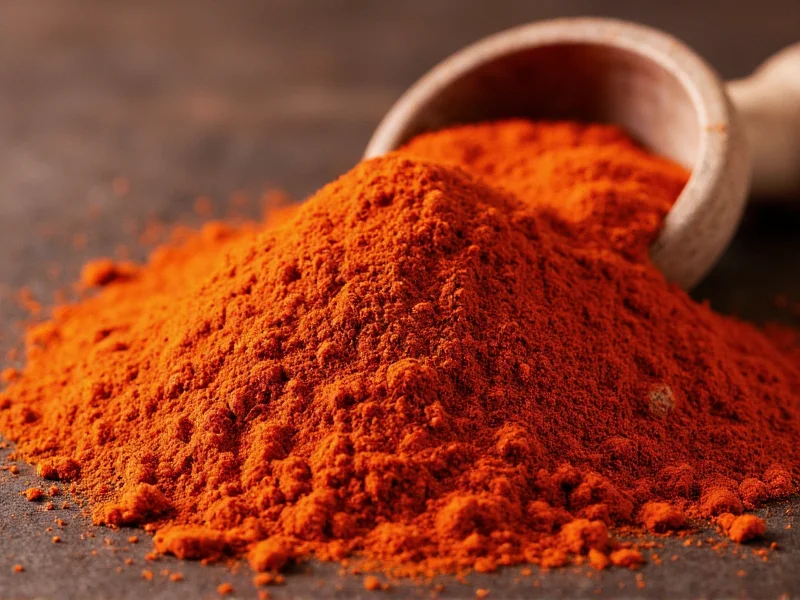Understanding the difference between smoked paprika and regular paprika is essential for home cooks and culinary professionals alike. Both spices originate from Capsicum annuum peppers, but their production methods create dramatically different flavor profiles that significantly impact cooking results.
What Exactly Is Paprika?
Paprika serves as a versatile spice made from ground dried peppers. Originating in Central Mexico and brought to Europe by Spanish explorers, it became particularly popular in Hungarian and Spanish cuisines. Regular paprika comes in various heat levels:
| Paprika Type | Heat Level | Primary Flavor Notes | Common Regional Use |
|---|---|---|---|
| Sweet Paprika | Mild (0-500 SHU) | Bright, sweet, slightly fruity | Hungarian goulash, deviled eggs |
| Hot Paprika | Medium-Hot (5,000-15,000 SHU) | Spicy, vibrant pepper flavor | Spanish chorizo, stews |
| Smoked Paprika | Variety-dependent | Smoky, earthy, complex | Paella, barbecue rubs, roasted vegetables |
How Smoked Paprika Differs in Production
The critical distinction between smoked paprika and regular paprika lies in the drying process. Traditional paprika undergoes simple sun-drying or air-drying, while authentic smoked paprika—particularly Spanish Pimentón de la Vera—gets slowly smoked over oak wood fires for up to 15 days. This smoking process creates the characteristic deep red color and imparts complex flavor compounds that regular paprika lacks.
When considering can I substitute smoked paprika for paprika in recipes, the answer depends entirely on the desired outcome. Substituting smoked for regular paprika introduces a pronounced smoky element that may overpower dishes requiring pure pepper flavor. Conversely, using regular paprika where smoked is specified misses the essential smokiness that defines certain regional dishes.
Flavor Profile Comparison
Understanding what is the flavor difference between smoked and regular paprika helps in recipe development:
- Regular paprika offers clean pepper flavor ranging from sweet to hot, depending on variety, with no additional processing notes
- Smoked paprika delivers layered complexity with distinct wood-smoke notes, earthiness, and sometimes subtle bitterness from the smoking process
The smoking process creates hundreds of additional flavor compounds through the Maillard reaction and smoke absorption. This explains why smoked paprika vs sweet paprika represents such a dramatic flavor difference despite sharing the same base ingredient.
Culinary Applications and Substitution Guidance
Knowing best uses for smoked paprika in cooking prevents recipe failures. Smoked paprika shines in dishes where smokiness enhances the overall flavor profile:
- Traditional Spanish paella and chorizo
- Barbecue rubs and smoked meat applications
- Roasted vegetables and hearty bean dishes
- Smoky tomato sauces and stews
Regular paprika works better when you want pure pepper flavor without smoke interference:
- Hungarian goulash and paprikash
- Deviled eggs and potato salads
- Light-colored sauces where color matters
- Recipes specifically calling for sweet or hot paprika
Regional Variations and Quality Considerations
Not all smoked paprikas deliver the same quality. Authentic Spanish Pimentón de la Vera carries a Protected Designation of Origin (PDO) status, guaranteeing traditional production methods. Hungarian paprika, while renowned for quality, typically doesn't undergo smoking—making paprika varieties and their culinary applications distinctly regional.
When shopping, check labels for:
- Dulce (sweet), Agridulce (bittersweet), or Picante (hot) designations for Spanish smoked paprika
- "Smoked" clearly stated for non-Spanish varieties
- Freshness dates, as paprika loses potency within 6-12 months
Storage Recommendations
Both varieties require proper storage to maintain flavor. Keep paprika in airtight containers away from light and heat. Smoked paprika's complex flavor compounds may degrade faster than regular paprika, making freshness particularly important when exploring how is smoked paprika made differently affects shelf life.
Common Misconceptions
Many home cooks mistakenly believe all paprika contains smoke flavor. In reality, unless specifically labeled "smoked," paprika contains no smoke elements. This confusion often leads to recipe failures when substitutions occur without understanding smoked paprika vs paprika: key differences explained.











 浙公网安备
33010002000092号
浙公网安备
33010002000092号 浙B2-20120091-4
浙B2-20120091-4